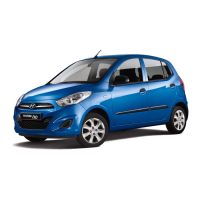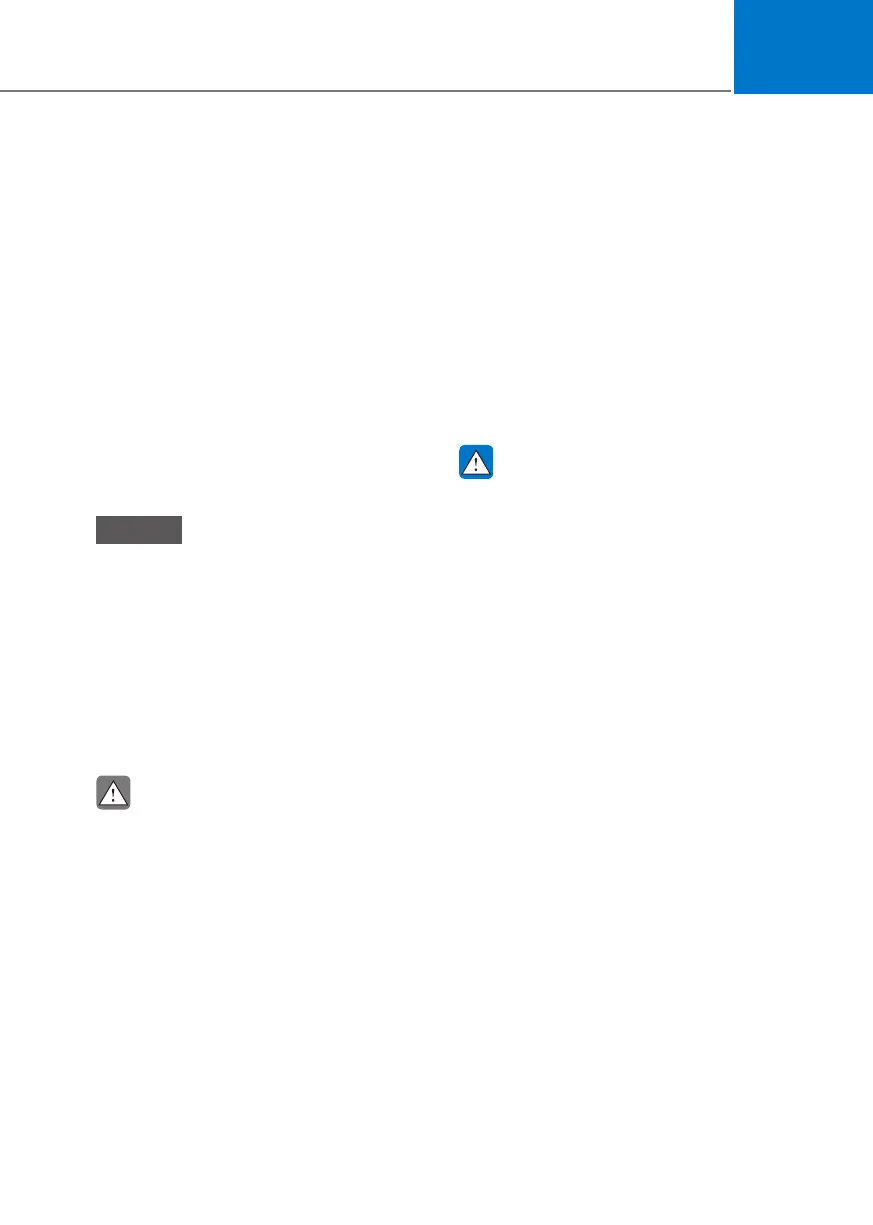7-21
07
If you have a tire gauge, check the
tire pressure (see “Tires and Wheels”
in chapter 2 for tire pressure instruc-
tions.). If the pressure is lower or
higher than recommended, drive
slowly to the nearest service station
and adjust it to the recommended
pressure. Always reinstall the valve
cap after checking or adjusting tire
pressure. If the cap is not replaced,
air may leak from the tire. If you lose
a valve cap, buy another and install it
as soon as possible. After changing
tires, secure the flat tire and return
the jack and tools to their proper stor-
age locations.
NOTICE
• Checkthetirepressureassoon
as possible after installing a
spare tire. Adjust it to the rec-
ommendedpressure.
• Checkandtightenthewheellug
nuts afterdriving over 50km if
tiresarereplaced.Re-checkthe
tirewheellugnutsafterdriving
over1,000km.
CAUTION
Yourvehiclehasmetricthreadson
thestudsandlug nuts.Make cer-
tain during tire changing that the
same nutsthat wereremoved are
reinstalled. If youhave to replace
yourlugnutsmakesuretheyhave
metricthreads toavoiddamaging
thestudsandensurethewheelis
properly secured to the hub. We
recommend that you consult an
authorized HYUNDAI dealer for
assistance.
If any of the equipment such as the
jack, lug nuts, studs, or other equip-
ment is damaged or in poor condition,
do not attempt to change the tire and
call for assistance.
Use of compact spare tires
(if equipped)
Compact spare tires are designed for
emergency use only. Drive carefully
on the compact spare tire and always
follow the safety precautions.
WARNING
Topreventcompactsparetirefail-
ure and loss of control possibly
resultinginanaccident:
• Usethecompactsparetireonly
inanemergency.
• NEVER operate your vehicle
over80km/h(50mph).
• Do not exceed the vehicle’s
maximumloadratingortheload
carryingcapacityshownonthe
sidewall of the compact spare
tire.
• Do not use the compact spare
tire continuously. Repair or
replacetheoriginaltireassoon
as possible to avoid failure of
thecompactsparetire.

